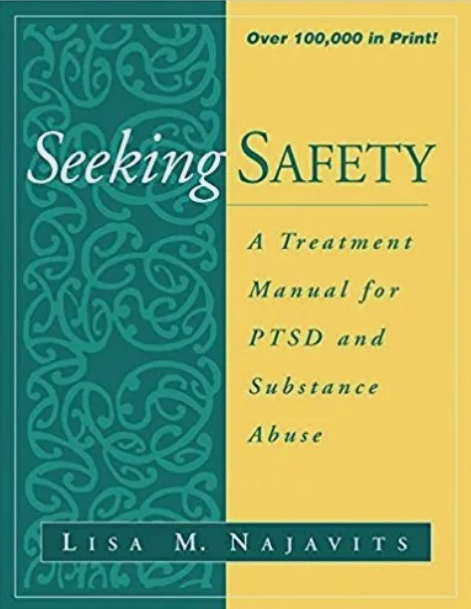At Counseling Connect, we draw from many modalities and always try to match interventions with the needs and goals of clients. Because we work frequently with people that have trauma and/or addiction issues, one of the treatment approaches we regularly implement is a model called Seeking Safety.
People who have experienced extreme adversity sometimes suffer from symptoms Post-traumatic Stress Disorder (PTSD). Survivors of trauma are more likely to develop addictive or compulsive behaviors, which may involve substance abuse, gambling, self-harm, codependency, sex, food, and even social media. For individuals struggling with either trauma or addiction or both, Seeking Safety is an incredibly useful resource. This model is an evidence-based treatment that focuses on the primary goal of re-establishing safety in all aspects of life, including relationships, thinking, behaviors, and emotions. Safety is absolutely essential for those with a history of trauma, as their attempts to avoid the pain of their past often lead to ineffective, unhealthy coping mechanisms. Seeking Safety can help transform those negative thinking and behavior patterns and teach you strategies for setting healthy boundaries, managing feelings safely, and improving day to day functioning.
Another benefit of Seeking Safety is its emphasis on the present, so you do not have to recount any distressing events or relive the emotional pain associated with past trauma. It is strength-based and centered around the principles of hope, optimism, and living a fulfilled and balanced life of recovery. There IS life after trauma and addiction. And we want to help you discover that for yourself on your journey of healing. We are here to support you in learning positive, effective ways of coping and to encourage you to embrace yourself as a human being of immeasurable worth and potential.
Contact us today and let’s start this journey together! Call 828-475-5667 or visit https://counselingconnect.clientsecure.me/client_portal.
The following is an excerpt from a summary written by Lisa M. Najavits, PhD, the developer of Seeking Safety (June, 2018).
What is Seeking Safety?
Seeking Safety was designed for people with a history of trauma and/or addiction.
Trauma means a distressing event such as a child abuse, major accident, combat, domestic violence, natural disaster, etc.
Addiction means destructive use of alcohol, drugs, gambling, food, shopping, etc.
It focuses on coping skills to help you become more safe in your relationships, thinking, and actions.
Seeking Safety is very safe and optimistic. It focuses on your strengths and helps you increase them. It has 25 topics, although you can do as few or many as you choose to. Examples of the topics are:
1. Safety 2. Taking Good Care of Yourself 3. Honesty 4. Asking for Help 5. Recovery Thinking 6. Setting Boundaries in Relationships 7. Healthy Relationships 8. Creating Meaning 9. Compassion 10. Detaching from Emotional Pain (Grounding) 11. Community Resources 12. Discovery 13. Getting Others to Support Your Recovery 14. Integrating the Split Self 15. Commitment 16. Respecting Your Time 17. Coping with Triggers 18. Self-Nurturing 19. Red and Green Flags 20. Life Choices
Seeking Safety focuses on the present. This means you will not be asked to reveal upsetting stories of trauma or addiction. We focus on what you can do right now to create a better life for yourself.
It is relevant to all types of trauma and/or addiction. For example, you may have survived traumas such as child abuse, combat, natural disasters, accidents, or violence. You may have addiction to substances, gambling, food, or other behavior. If you have both trauma and addiction issues, we address the link between the two—how common it is for the two to go together.
Seeking Safety has been successfully used for over 20 years across genders and with people struggling with many different life issues including HIV/AIDS, homelessness, serious mental illness, and incarceration.
Want to learn more? See www.seekingsafety.org

